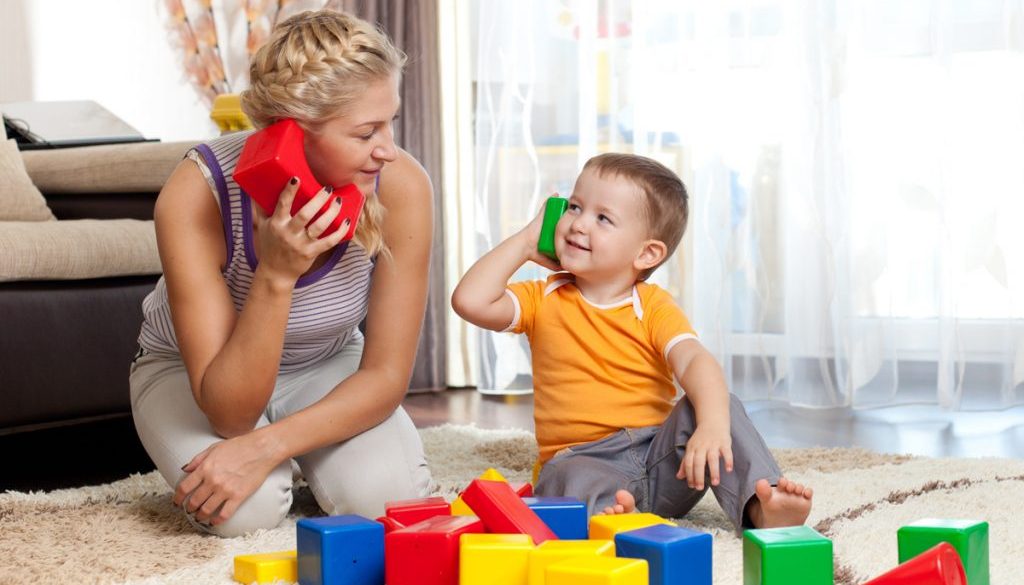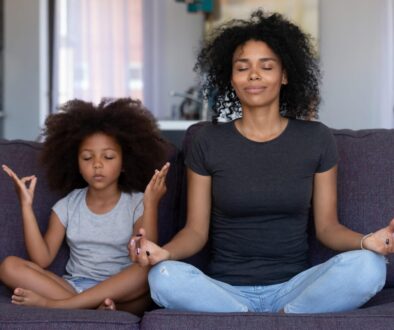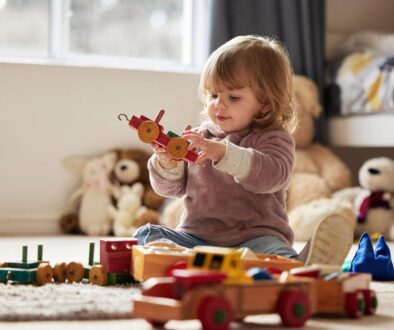Create Forty Carrots “Play Stations” At Home

At Forty Carrots, we believe that play is the work of children and the benefits of play are endless. Play is a voluntary, enjoyable activity with no purpose or end goal, and it is necessary for healthy development. Research shows that 75 percent of brain development occurs after birth. Play helps with that development by stimulating the brain through the formation of connections between nerve cells. This process helps with the development of fine and gross motor skills. Play also helps your child to develop language and socialization skills. Play allows children to learn to communicate emotions, to think, be creative and solve problems.
Visit one of our Partners in Play® groups and you will see a room set-up with separate play stations on soft mats. Forty Carrots Parenting Educators are intentional about the toys used and the setup of the space. The goal is to create an environment that is inviting to children and encourages open ended play for caregivers and children to be on the floor engaging in uninterrupted play together. Parenting Educators delight in watching children “light up” as they explore the space with their caregivers, moving from mat to mat.
The current COVID19 pandemic has temporarily moved our Partners in Play® groups to a virtual platform, but here are a few ways that you can re-create the Forty Carrots play “stations” at home for you and your little one to engage in play together:
Create Separate Play Stations: Set up 3-5 areas with different types of open-ended play options. Give your child the freedom to choose what to play, how they’ll play, and for how long. Follow your child’s lead as they navigate the room.
Keep It Unstructured: Make sure your child has time to explore and discover during play. Allow them to follow their own interests, not by any prescribed rules or plans.
Play is About the Process not the Product: Focus on the process of their play; there does not need to be a learning component or end goal.
Types of Toys
- Focus on open ended toys that engage rather than entertain are a great option to encourage unstructured, spontaneous play. (blocks; soft or wooden, legos, animal figures)
- Toys that light up or make noises can limit imaginative, free play.
- Try to choose toys made from natural materials, like wood and metal, whenever possible to give the child more real experiences.
- Include toys that develop fine motor (small muscles) and gross motor (big muscles) skills.
- Make space for access to art, music, and books. (crayons, stencils, tempura sticks)
- Play often involves imagination, ‘make believe’, or ‘playing pretend.’ (dolls, kitchen sets, dress up clothes)
- Be sure to include toys that offer a varying degree of difficulty. Utilize a mix of challenging toys, like a puzzle with more pieces than your child usually works with, and things that are easy and familiar for your child to play with when they need a mental break.
- Manipulative toys encourage exploration. This includes puzzles, various table blocks, and small construction materials such as Legos, board games, and collections of objects (connecting chains, connecting rabbits, shells, bottle tops, etc.) When children use toys and games, they explore how things work; learn to be creative and use their imaginations; strengthen and control the small muscles in their hands; work cooperatively and solve problems; and learn early math ideas and concepts.
Remember that the best toy for your child is YOU! There is nothing that takes the place of your undistracted time and presence. The great thing about creating play stations for your little ones is that it provides a place for you to engage in play together and can also help encourage independent play.





